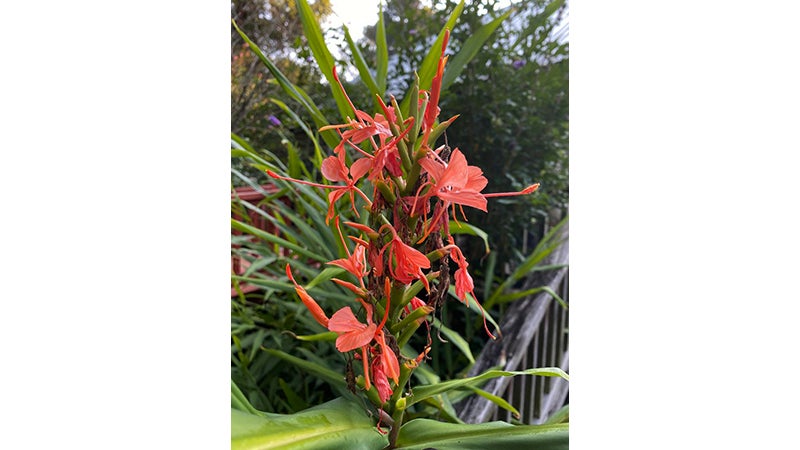Spreading history near and far with plants
Published 12:00 pm Sunday, December 5, 2021
|
Getting your Trinity Audio player ready...
|
Live and learn, and in the process find cool new plants that have been hiding right under our noses for generations.
Last week I did a landscape/garden consultation around an 1840s log cabin in rural north central Mississippi. I have an eye for this sort of garden, having been raised by an avid gardener born in the 1800s and who tended many plants from centuries past, plus many of my friends curate historic gardens across the South.
It was mostly walking around, noting the garden’s north/south exposures, existing trees and shrubs, soil type, etc., and the architecture of the house itself. Plus looking at faded photos from a century ago, and talking with the home owner about what she wants and is prepared to do maintenance-wise.
She cherishes plants that remind her of her grandmother and mother, with something in bloom every season, plus fragrance and some edible fruits. No probs on any of this, because this isn’t stuck-in-time Colonial Williamsburg – we’re allowing the garden to evolve.
But I’m going with true heirlooms. Unlike antiques, which in garden history circles means over half a century old, heirloom applies to anything inherited or passed along to others, antique or not. While only one person at a time can own a hand-me-down tool or garden accessory, plants can be shared and spread by countless gardeners, keeping plants that are not in the general garden circuit going for generations to enjoy.
What makes a shrub, perennial, bulb, annual, or potted plant a garden-worthy “passalong” heirloom? It must have values (great foliage, seasonal flowers, fragrance, fruit, etc.), tolerate our summers and winters and rainfall patterns, grow in mostly just plain dirt without a lot of pampering, be resistant to serious insects and diseases, and very easy to share by dividing, rooting cuttings, or saving seeds. Plants that have all these characteristics tend to spread far and wide between gardeners; you can see a lot of them in small towns cottage gardens, and often in old cemeteries.
Classic examples include double orange daylilies, elephant garlic, figs, cannas, Clara Curtis mum, shrub roses, cast iron plant (Aspidistra), daffodils, iris… well, I have a printable brochure on dependable Southern heirloom plants, and if you shoot me an email I will send a free copy right back.
Anyway, in spite of my thinking I’ve seen it all over the decades, while poking around the old cabin’s flowerbeds looking for clues I came across a new-to-me treasure. It apparently is all over this rural county, shared between garden club members and their families, household and garden helpers, and beyond. It’s an astonishingly forgotten passalong heirloom plant, hard to find commercially but hidden from the world in back gardens.
A lot of you are familiar with the common white “butterfly” ginger, a waist-high cold-hardy perennial with heavily-fragrant white flowers in the fall; its Latin name is Hedychium coronarium if you want to look it up. Though rarely sold in garden centers it is widely grown, shared from gardener to gardener over the decades.
But this one, which I have never heard of much less seen, has brilliant orange-red flowers. And it is thriving in ordinary dirt around an old cabin, with not water or cold protection or anything. Turns out to be one introduced a little over a century ago, and simply called “red butterfly ginger” (Hedychium greenii if you want to look it up).
I swapped some of my Clara Curtis mum enough clumps of red ginger lily to share with gardeners who I know will spread it far and wide.
This is how garden history is made.
Felder Rushing is a Mississippi author, columnist, and host of the “Gestalt Gardener” on MPB Think Radio. Email gardening questions to rushingfelder@yahoo.com.






